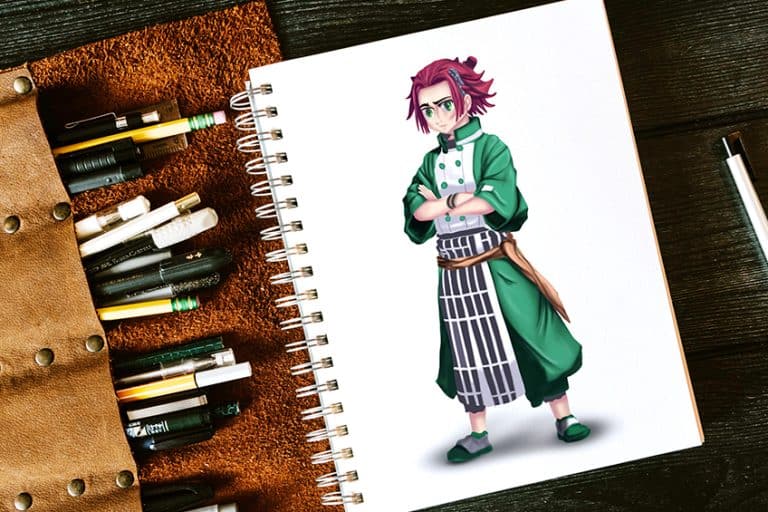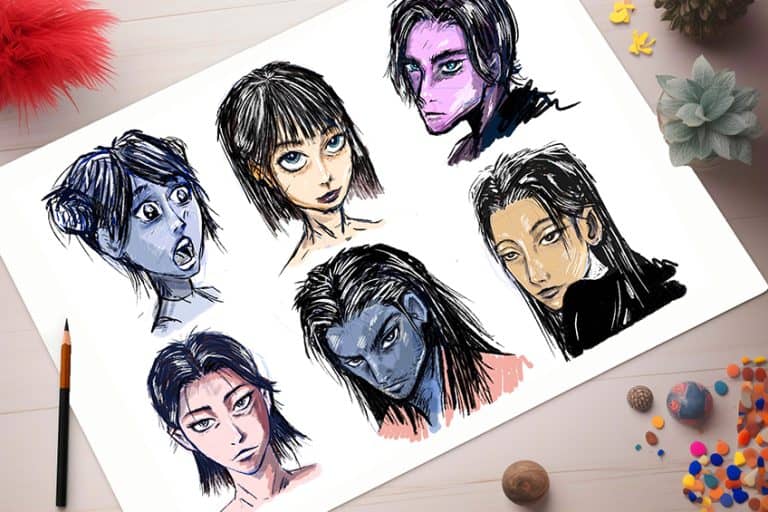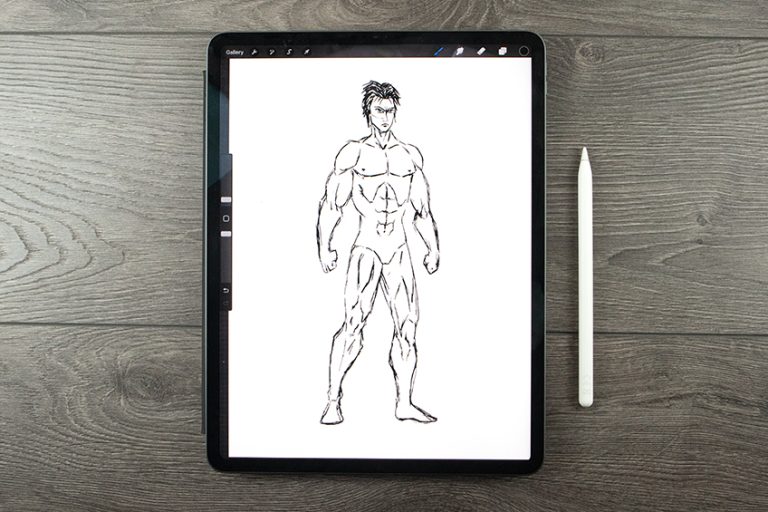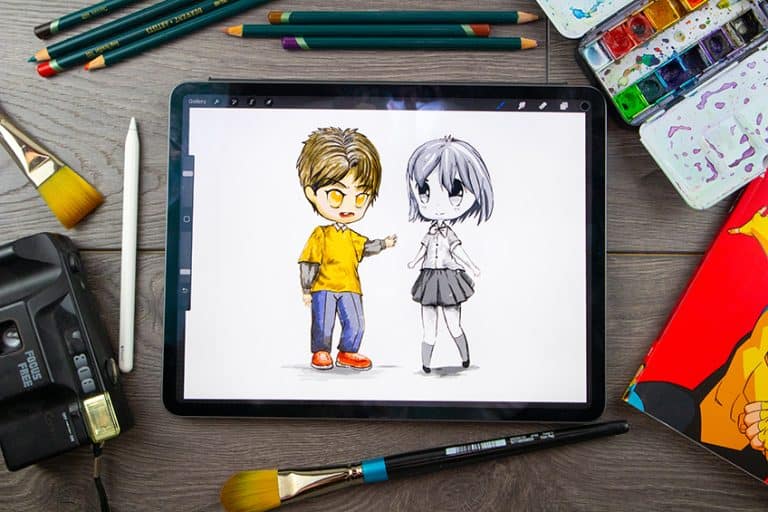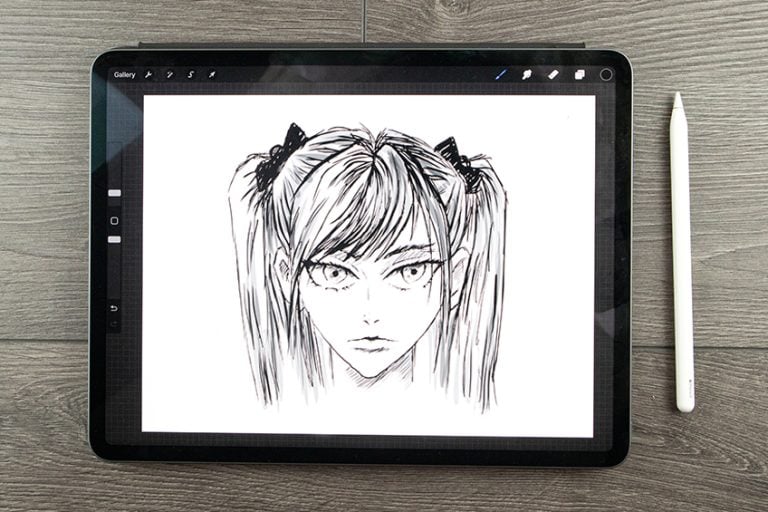How to Draw Comic Characters – A Guide to Superhero Drawing
Comic character drawing is both a great drawing exercise and a story-telling exercise because it requires creative thinking to set up a character’s identity as much as the aesthetic aspects of the character. Knowing how to draw comic characters is a great skill for integrating unique and interesting figures into your artwork. having the fundamental knowledge of how to draw superheroes can allow you to then play around with creating various different characters. Once you understand the basic steps, making characters will become quite easy.
How to Draw Comic Book Characters for Beginners
In this tutorial on how to draw comic characters, we will learn about the fundamental steps that are required to assemble characters successfully. There are many ways to draw characters and in this tutorial, we will break up the process into the most digestible and doable drawing process. We will learn how to work with proportions, poses, enhancing features, and unique character traits.
When it comes to creating a comic book character, we will find that it doesn’t have to be as difficult as it seems.

Proportions
Understanding basic human proportions is the first stage of learning how to draw comic characters. Once we understand basic anatomy, this will allow us to manipulate characters and their body. We need to understand that figures are divided into eight even segments.
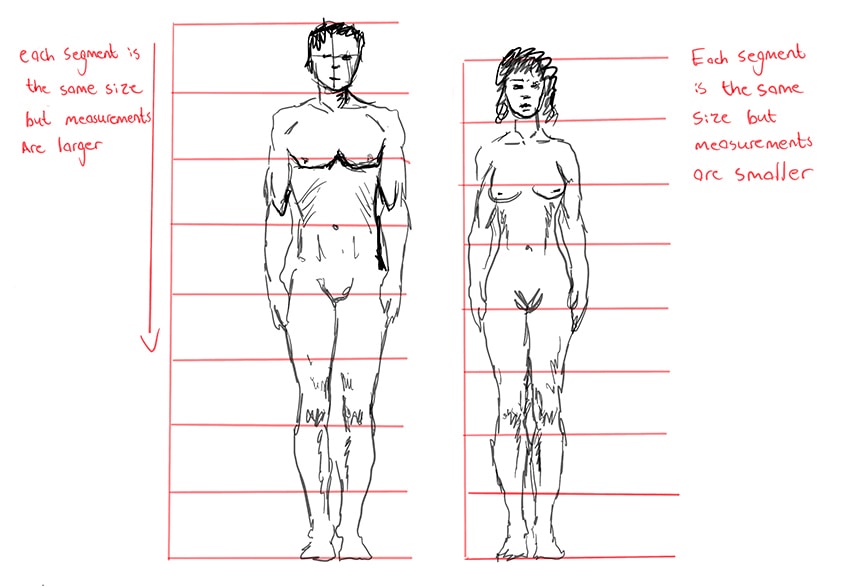
These eight segments establish the different body parts and how proportional they are to one another. However, there is a characterization of figures in a comic style, which means that these proportions are not hard and fast rules.
They do, however, help to establish characters in a more realistic stature.
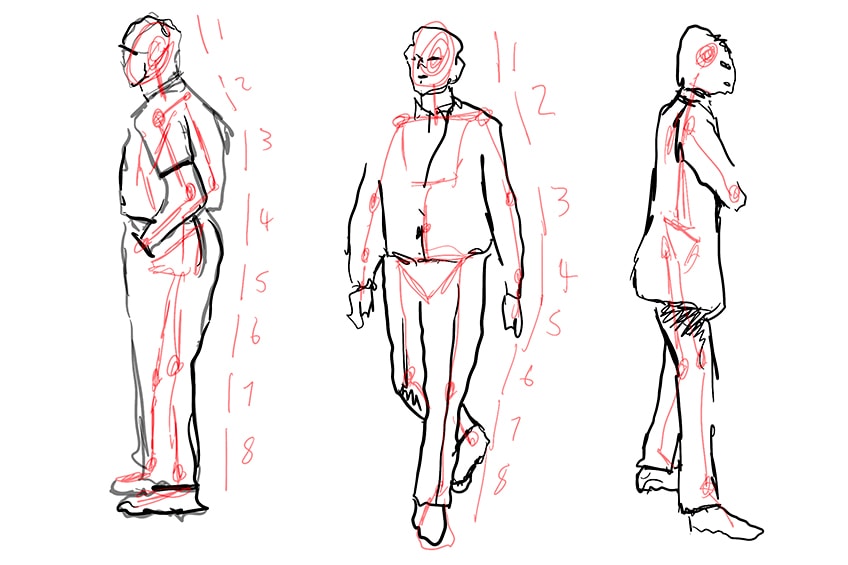
Poses
Once we understand the eight different segments, we can use them quite loosely to arrange figures in various poses. We can use the eight segments loosely to build character poses in a way that makes sense.
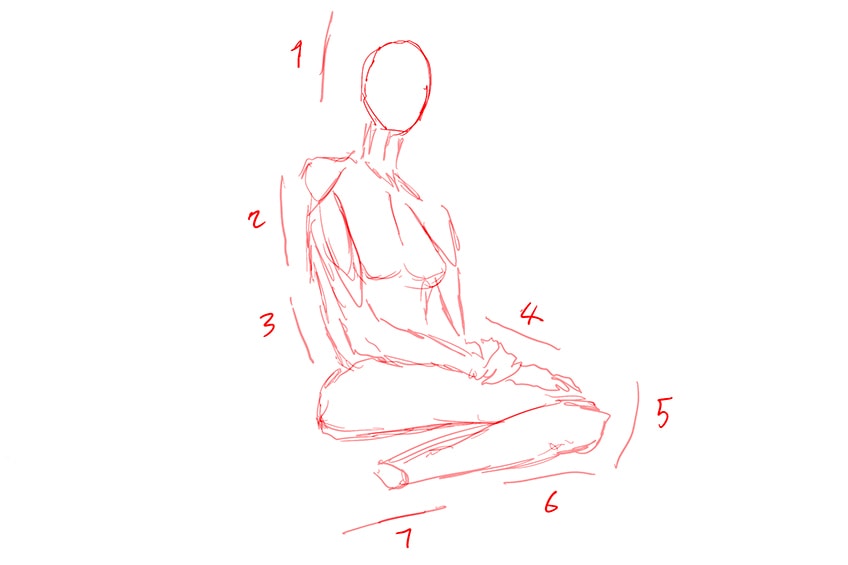
This is particularly true for the early stages of establishing how your comic character will look proportionally whilst setting a good foundation to work from.
Having the skeletal proportions established also gives you more freedom to deviate and change features, starting from a good base.

Again, this is not a rule to hold fast, but it does provide a good base from which you can work, especially when you start to change and enhance the features of your character. You want to be able to build the character up from the skeleton as if you were layering the character, eventually arriving at the point of clothing them.
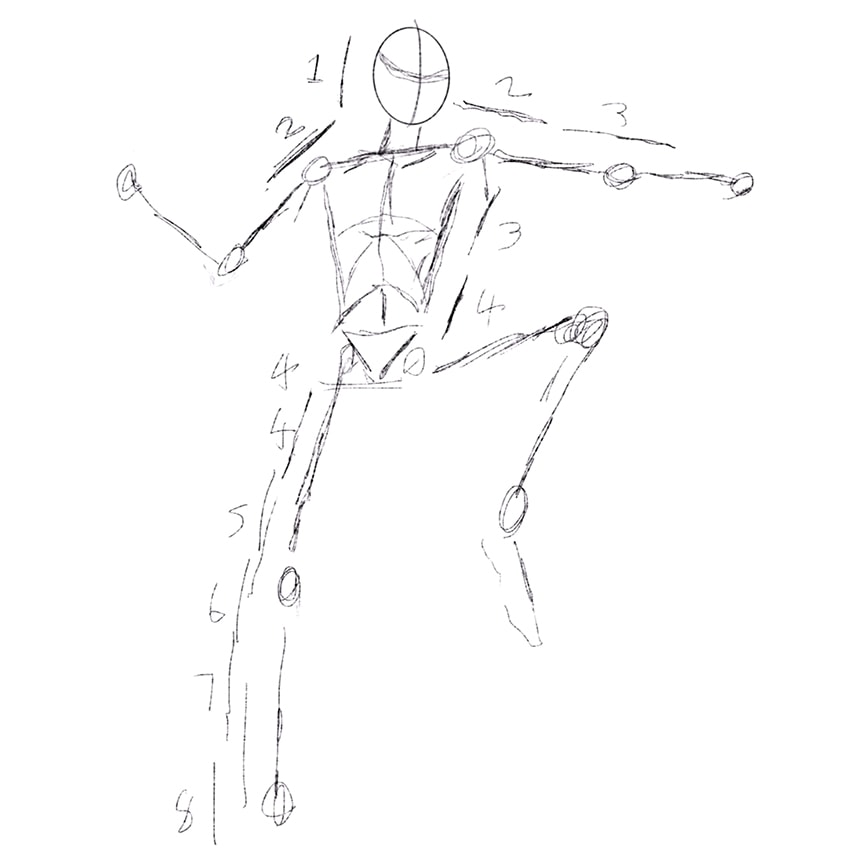
Enhanced Features
Once you have set up a character, we will find that it is always helpful to set the pose in its skeletal form, making sure all proportions are correct.
Once we have done that, we can lightly erase that skeletal structure and begin drawing over it.
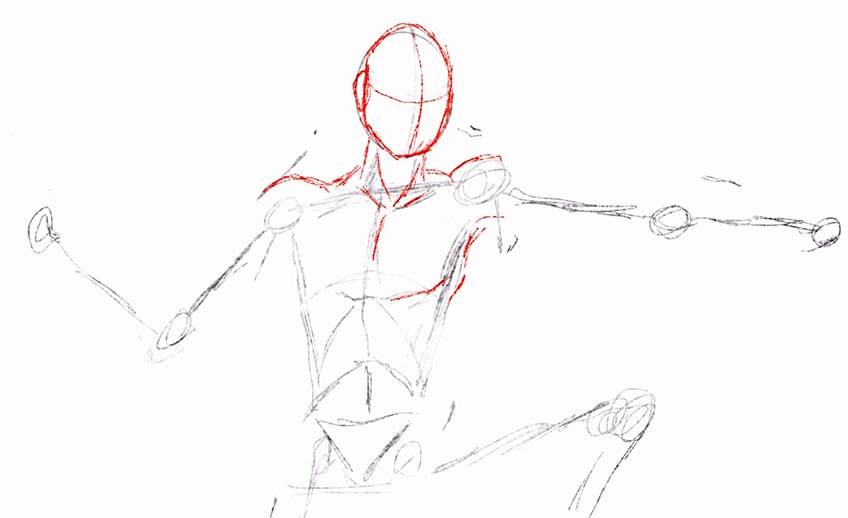
This is where we start to sketch the figure over the skeletal structure to establish the body of the character. We can allow ourselves the freedom to work out how emphasized the muscle mass will be to give the character a heroic stature.
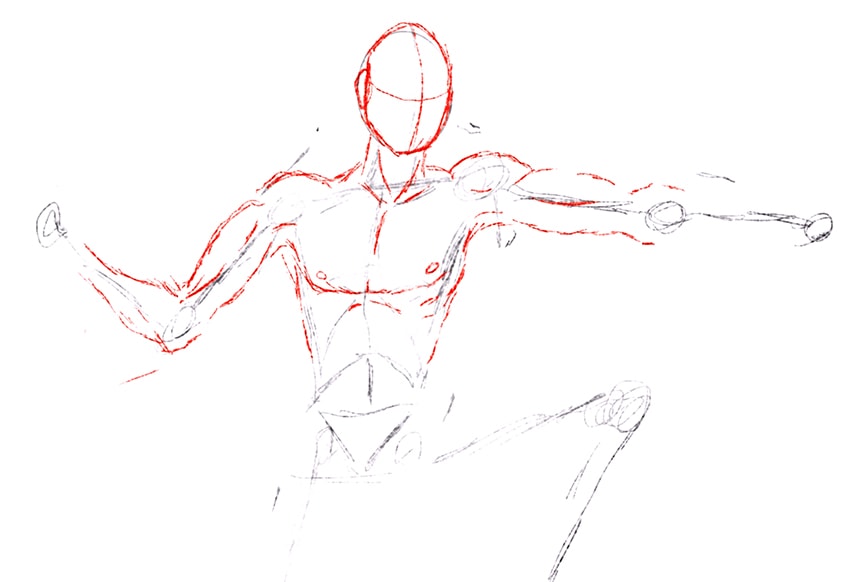
This point is about lightly sketching the body parts over the skeletal structure with the vision of how large, slim, lean, or large we would like our character to be.
A good suggestion would be that you start thinking about the identity of the character at this point.

Again, allow yourself to be quite loose and not precious about perfect proportions as this will start to give your character a unique stylized aesthetic. Once we allow for the creativity of our figure representation to take over, it becomes more comic-like and less realistic.
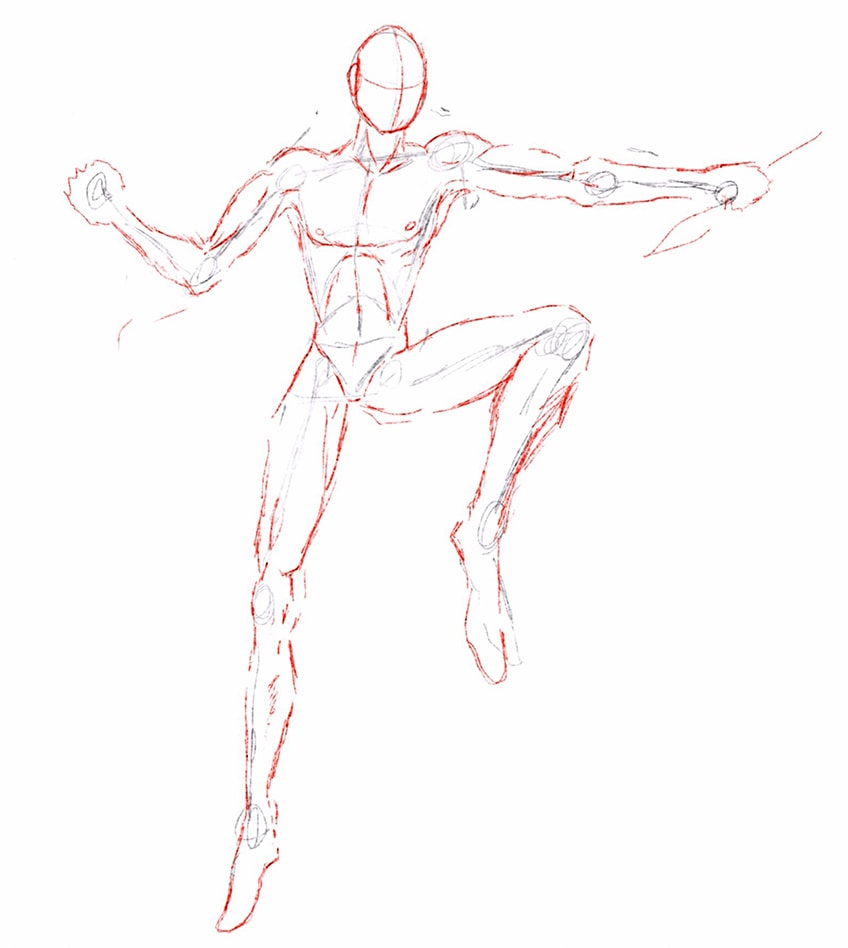
You can work on building up your sketch at this point, slowly enhancing your character more and more with each sketching process.
Drawing comics is all about creative interpretation of how you would like the character to look, which means that there are no rules.
Once you understand anatomical proportions, you can play around with emphasizing features to give your character an emboldened look. However, try to work out the features with a light pencil sketch first.
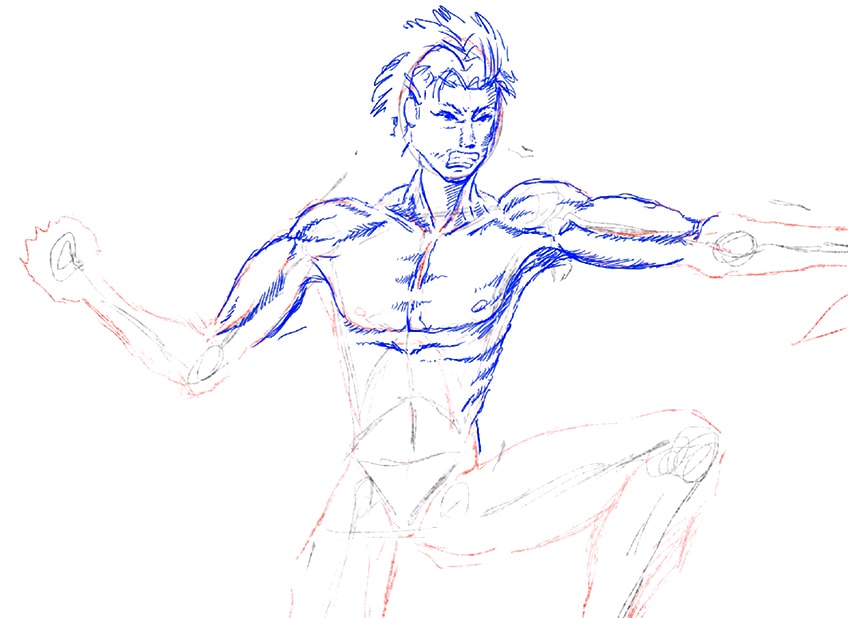
Making sure you work out the different features with a pencil sketch first will make it easier for you to add in shading and line work with darker tools.
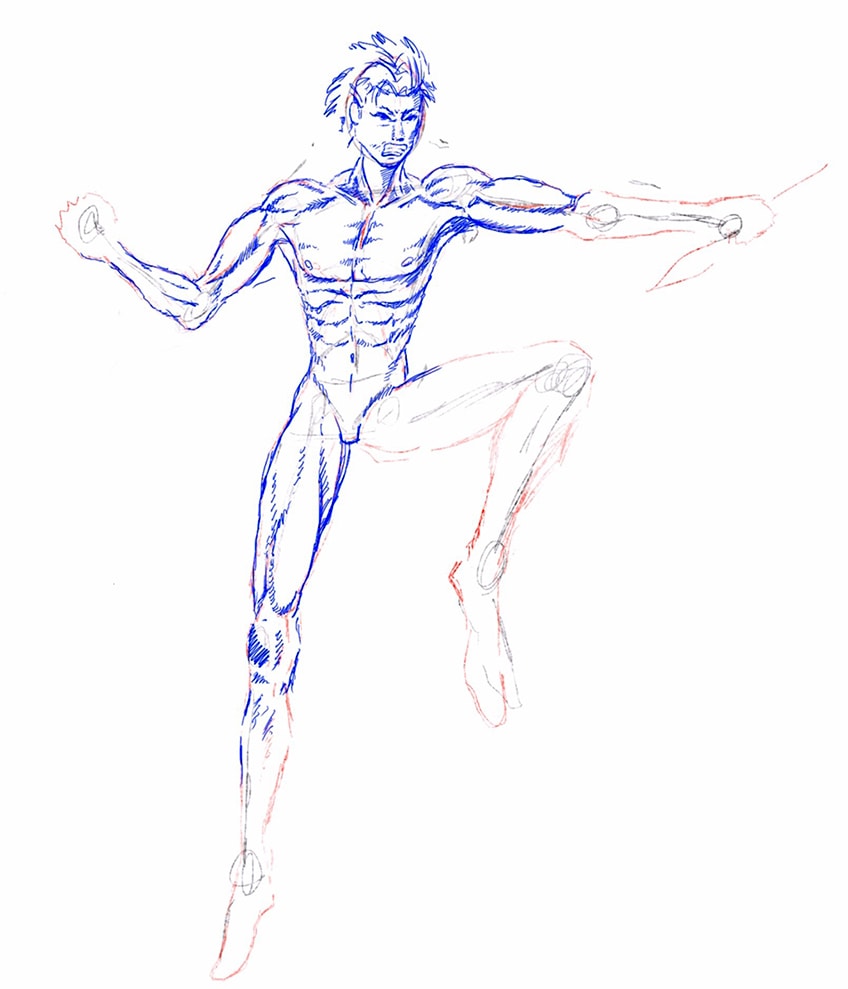
Again, try to think about the identity of your character and what type of build would suit them. Is your character swift? Are they tremendously muscular? Or do they completely contradict the stereotypes and appear quite normal?
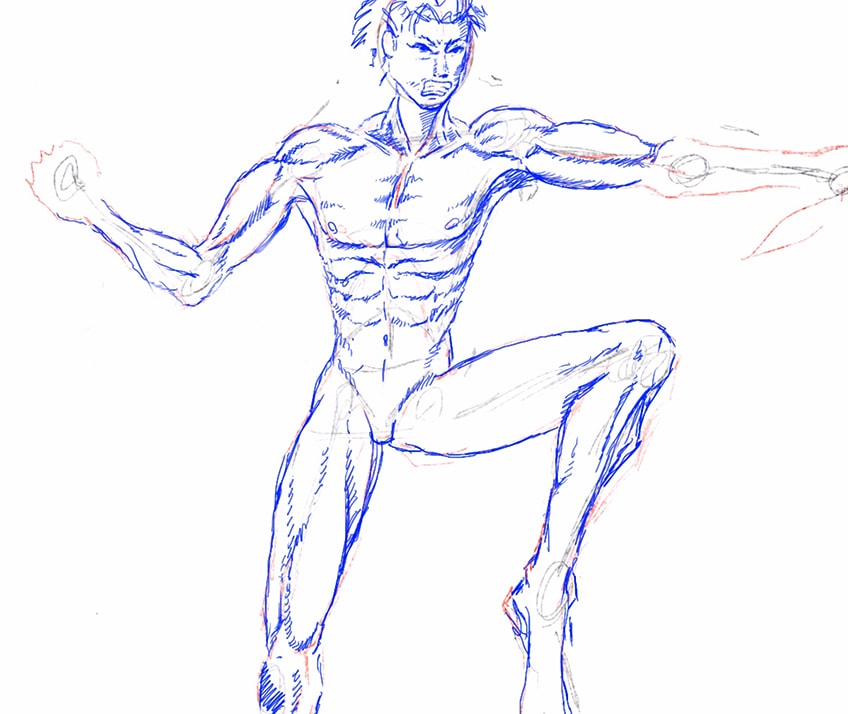
Once you have worked out the basic anatomical structure on top of the skeletal frame, you can now lightly erase this to prepare to work with shading and emboldened lines.

Emboldened Features
When it comes to comic character drawings, there are many styles to draw inspiration from. A good suggestion would be to scroll through Pinterest and explore different comic styles. You want to start giving yourself the creative freedom to explore drawing styles to find your unique aesthetic.
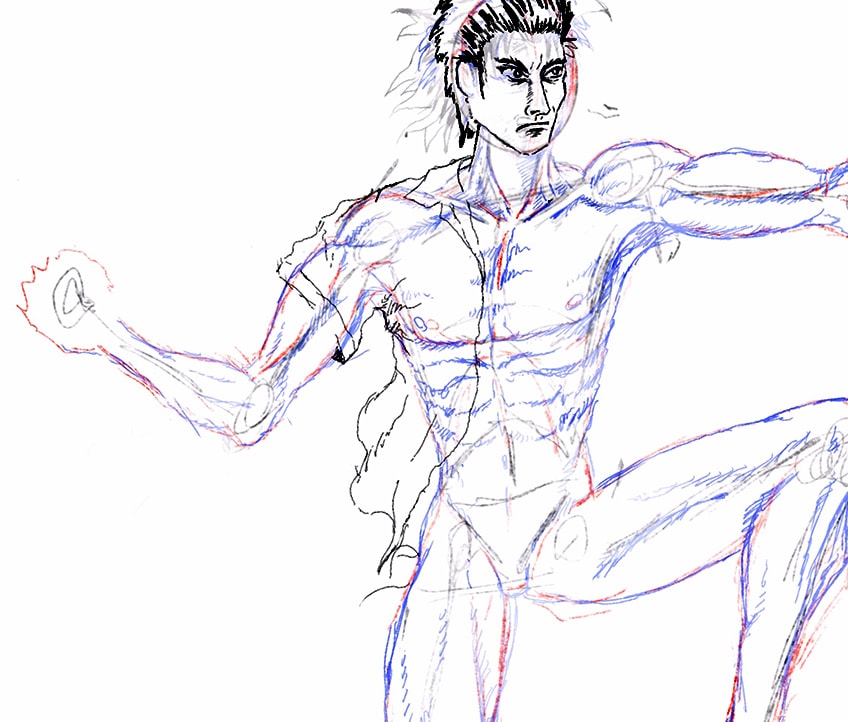
Again, the comic character drawing process is playful and open to the interpretation of visuals. This is true for how we represent both the anatomy and clothing of characters.
At this point, we can play around with how we dress the character.

Clothing and Attire
This is perhaps one of the most iconic aspects of comic character drawing. It is good to note that characters don’t always have to be wearing skin-tight suits, as this is only one of many ways of clothing a character. Clothing is all a matter of how it suits the character’s identity.
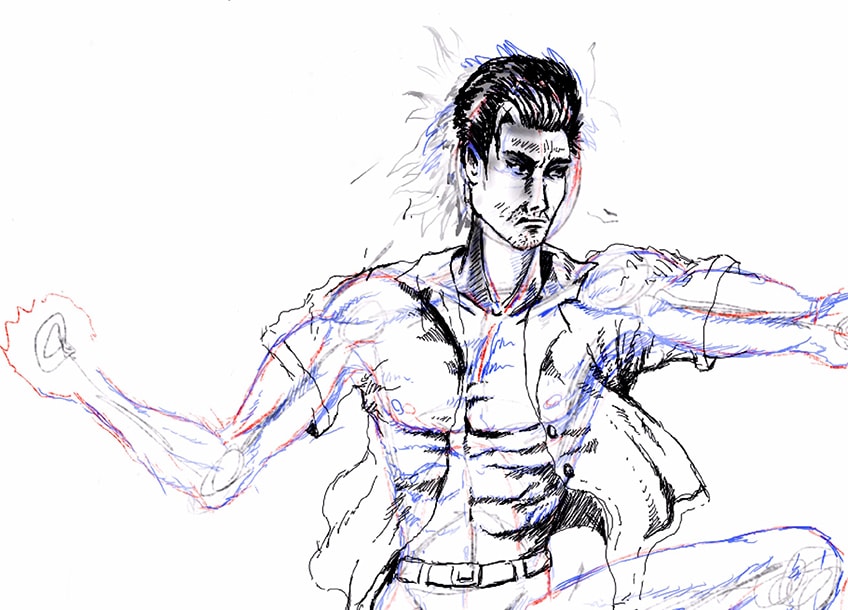
This unique feature of the character will establish a lot about the character’s identity and is a playful opportunity to do as you please.
They could either follow the conventional route of a skin-tight suit or perhaps be a Hawaiian T-shirt-wearing superhero; remember, there are no rules!

With clothing, we can allow ourselves to be quite dramatic with the line work and shadowing. It is good to keep some sort of light source present from a singular direction, to maintain continuity in the shadow formations.
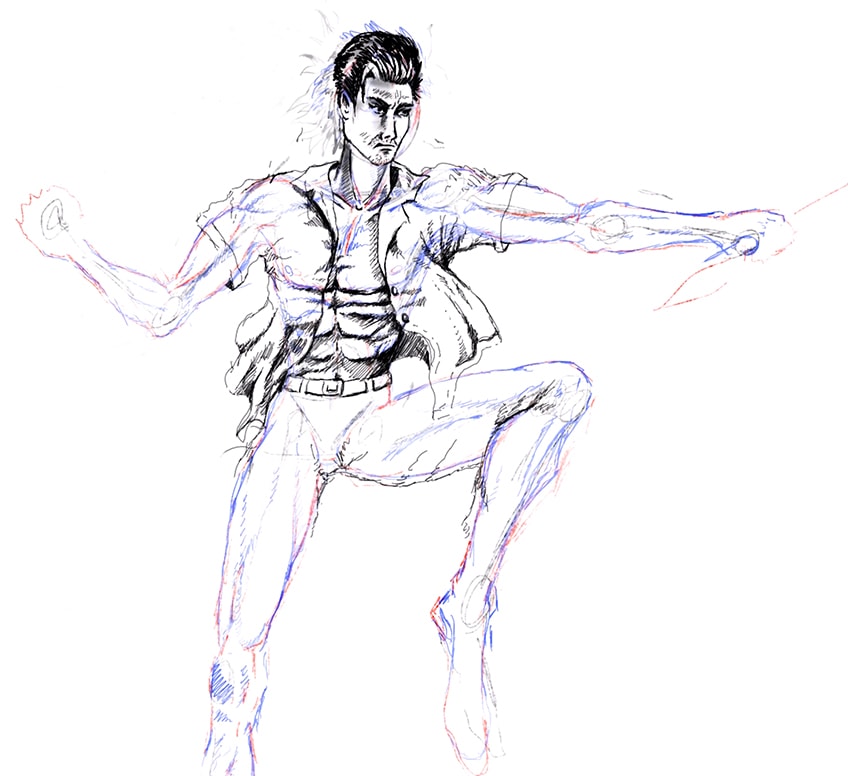
Remember that, with clothing, you are constructing the clothing around the figure. This means that we want to imagine how the figure’s pose will distort the fabrics around them.

A good general rule for tighter areas of clothing is that there is bouncing off the fabric in the areas of the body that bend. This can be any area in the body with mobility such as the armpits, ground, knees, and so on.
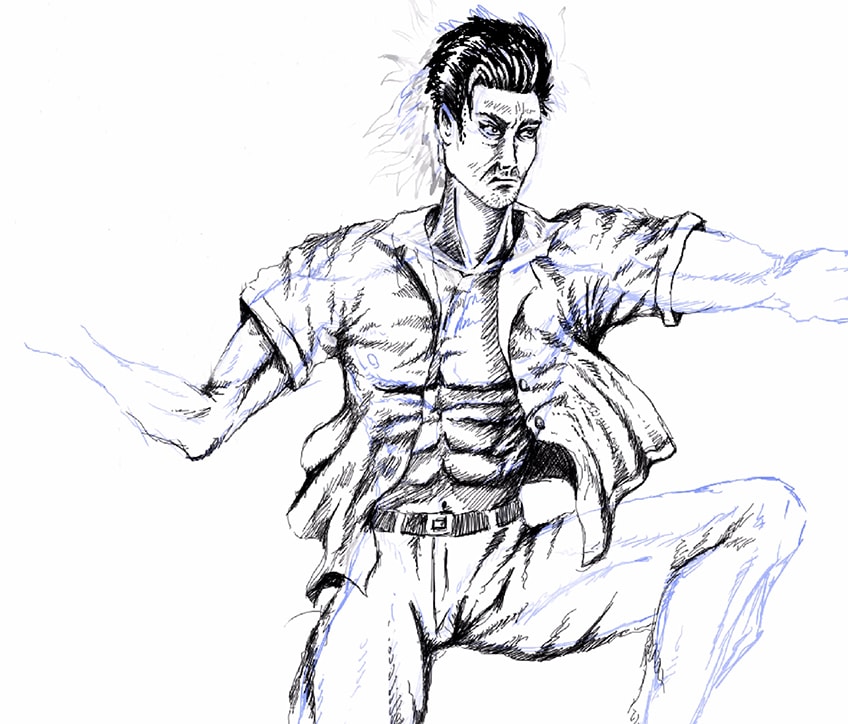
Again, we build the character up from skeletal structure to clothing because it is helpful to place clothing on a figure than to try and imagine clothing on a figure and then try to draw it.
This will also affect shadowing and, therefore, your shading and linework.
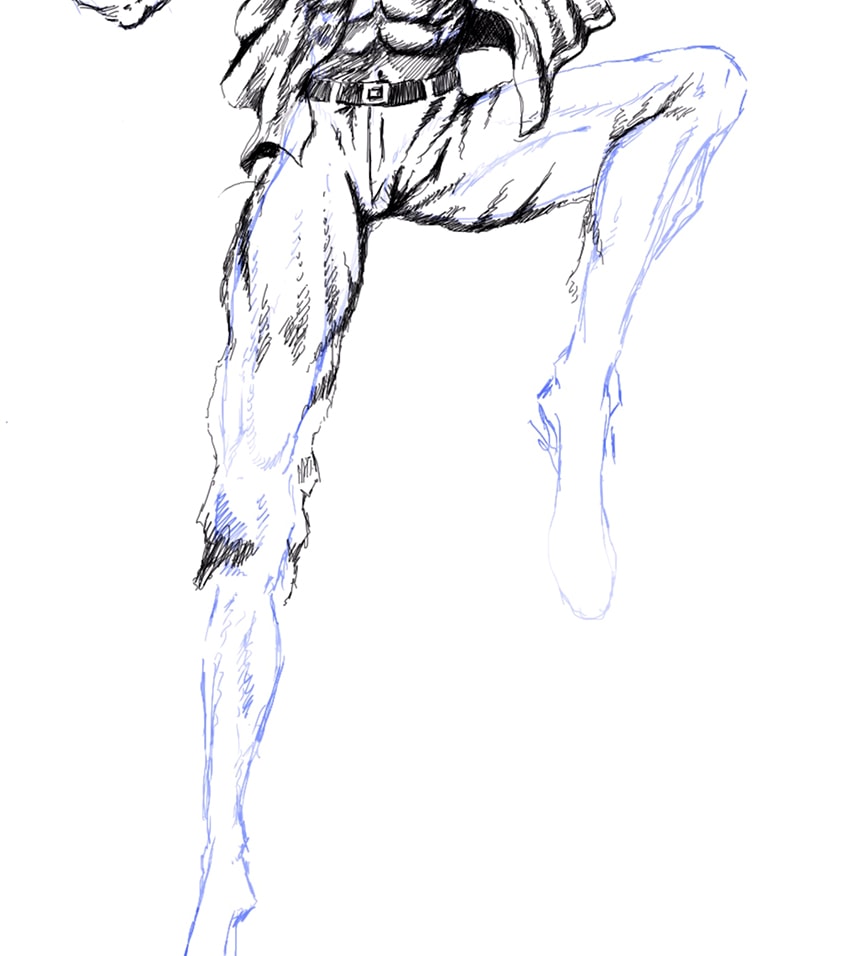
You can also consider different types of fabrics and how they shift and change in different ways. Some materials are slightly stiffer, whereas others are slightly more loose-fitting.
This is an element to consider if you were to clothe your character with different materials.

This is particularly true in comic character drawings when there is a clear difference in the fabric of the pants versus the shirt. The pants tend to look more blocky due to the fabric being slightly thicker and heavier. Whereas shirts have more rounded linework as they tend to be softer.
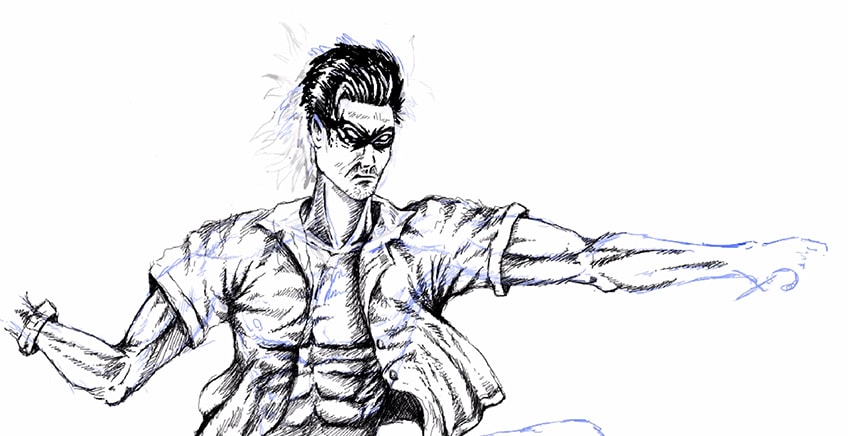
This also applies to the headwear of your character and how you would like to represent their facial identity.
Play around with different hairstyles, masks, and other headwear that might contribute to the identity of the character.

The best way will be to establish the character’s body first and then to cloth them as this is not only easier but will give a more accurate representation of clothing and how it forms on a figure.
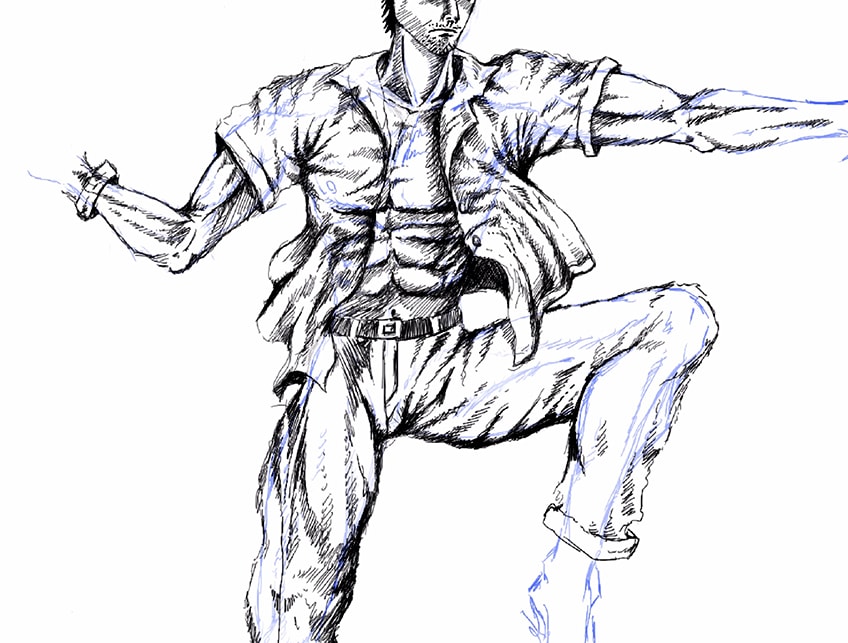
You can also play around with how dark or light you would like the shadowing to be. Again, there are many ways to establish shadowing in your comic character drawing.
These could be bold lines, fine line work, or however you choose to define the shadowing.
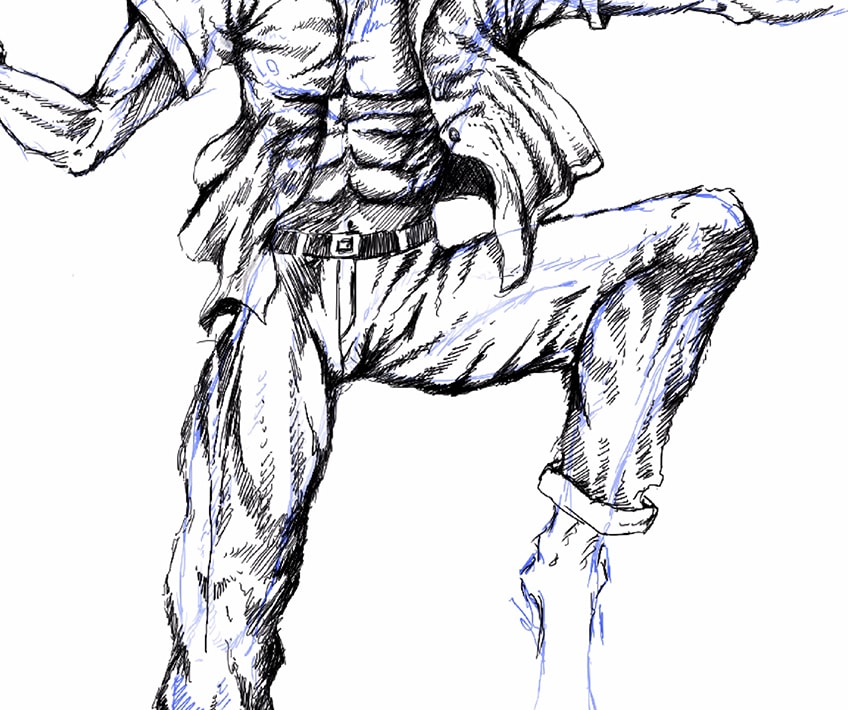
You want to take your time with clothing characters and work on the form and shadowing of the clothing. Try to consider what direction your character is moving in as well, as this can also have an effect on the clothing.

Unique Attributes
This would be where we start to think about the hands and what kinds of weapons, tools, or powers our character will have. This is a unique part of drawing comic characters that allows you to consider powers and abilities and how we might be able to represent this in the character.
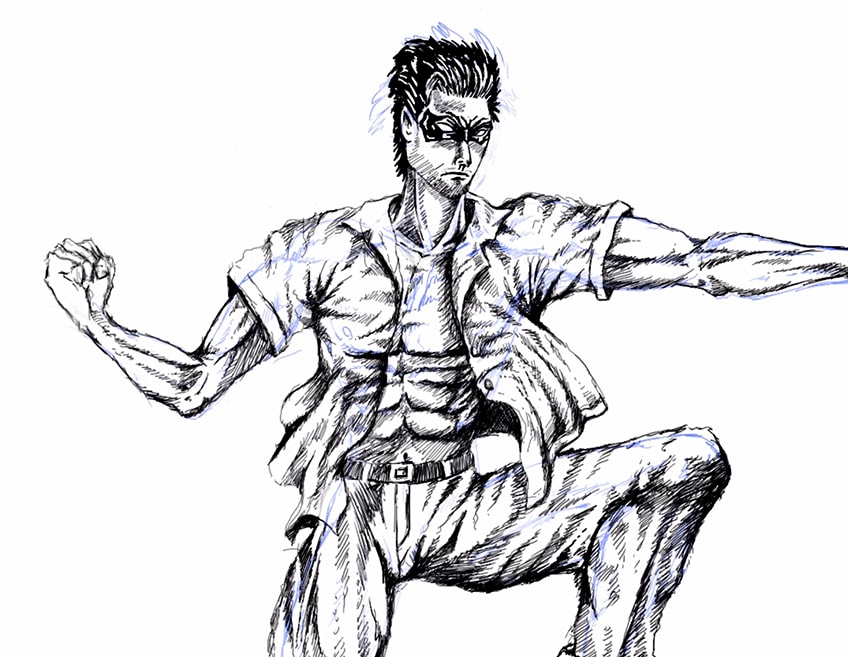
We can play around with weapons, energy beams, or nothing at all. Again, we don’t need to follow any specific criteria of what makes a superhero, and we can easily deviate from the guidelines as we choose.
These are the basic concepts to consider for superhero drawings or comic character drawings. Starting from the ground up, working with skeletal structures and then body shapes, and lastly, clothing is the easiest way of creating a comic book character.
Additional Enhancements
Once you understand the process of creating a comic book character, you then can consider inking and coloring and how this will ultimately complete the comic character drawing. This can have a major effect on the outcome of the character and contextualize them in a certain way.
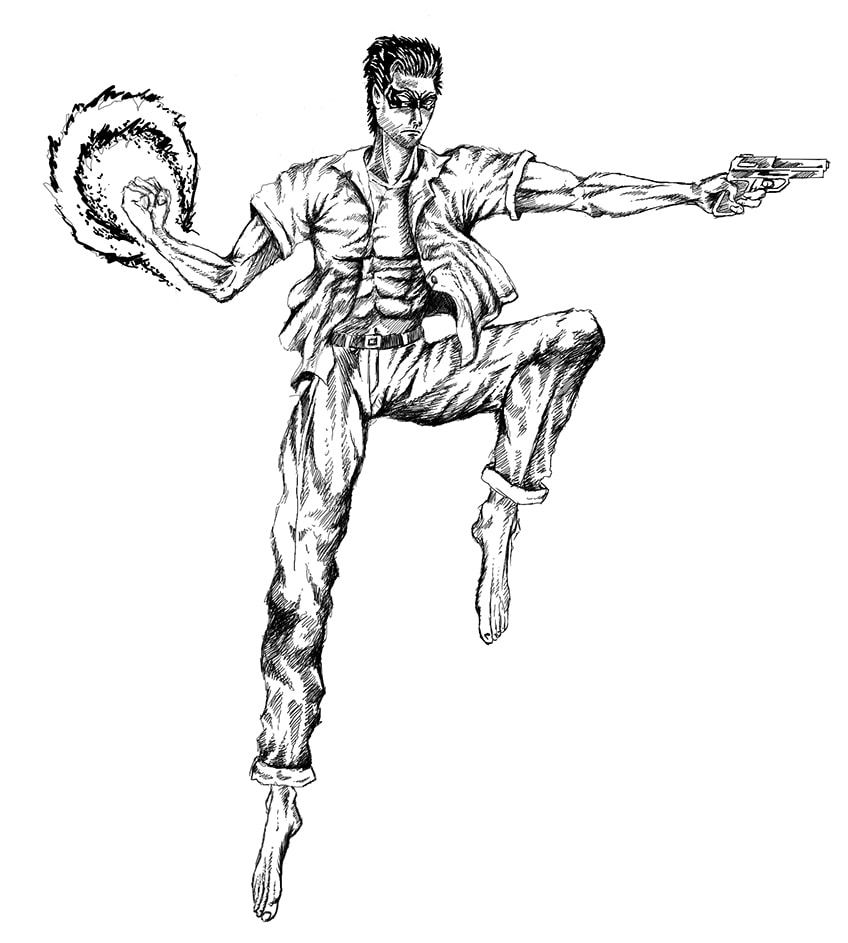
Simply the choice of skin tone, clothing color, or the color of their powers will frame your character in a particular way and can make them more brooding, light-hearted, and so on. Colors are powerful representations of various concepts, so consider how the character would be colored.
And there you have it – how to draw comic characters through a few helpful concepts to consider!
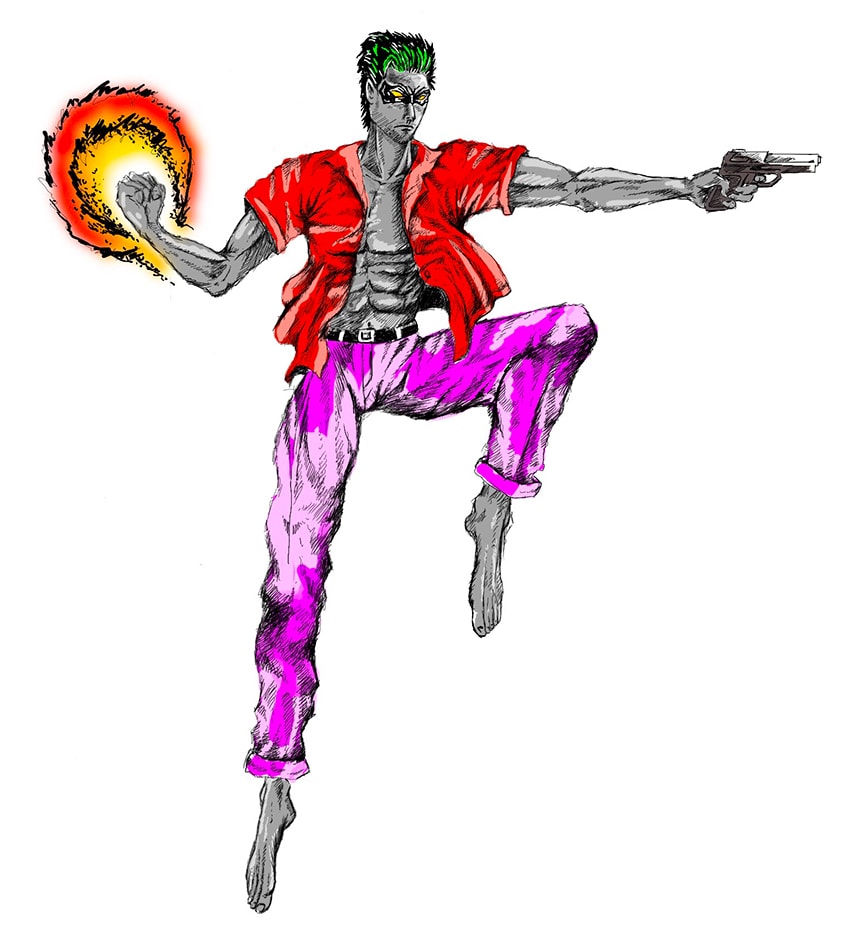
Tips to Remember
- Take your time building your character from the ground up. Imagine it as if you were assembling a body from the skeleton, all the way to clothing the character.
- Don’t stick to the status quo, explore character design. Once you have the proportions and poses, play around with how you would like your character to look. Don’t be afraid of bold lines. Explore some bold and contrasted shading to give your character a dramatic aesthetic.
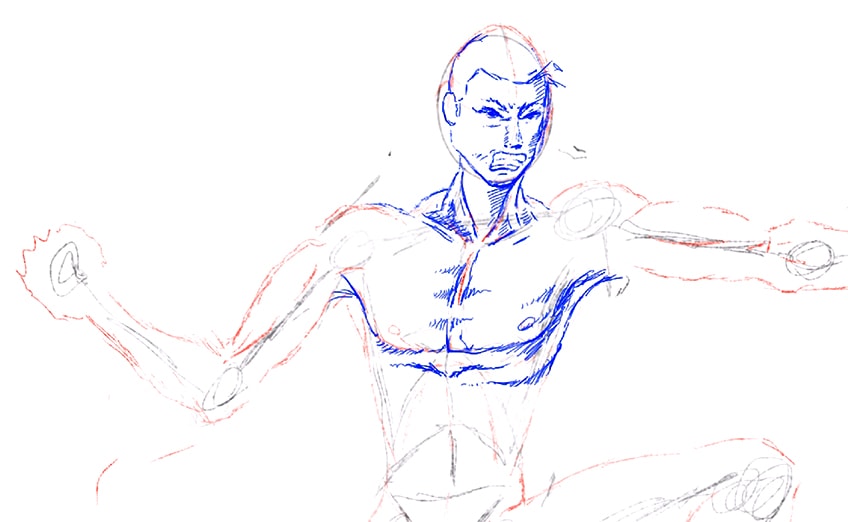
- Allow your character to be a little exaggerated. It’s okay if the proportions aren’t perfect- at the end of the day it’s a comic character drawing, and it can be weird!
- Have fun! Practice with these concepts in mind and try creating a variety of different characters.
Comic character drawings are not all the same and there are no specific criteria. Once you understand the fundamental concepts, you then can play around with how you represent these ideas in your superhero drawings. Learning how to draw superheroes is a fun task and should be played and experimented with.
View our Comic Character Drawing web story here.
Frequently Asked Questions
How Do You Draw Comic Character Proportions Correctly?
Learning how to draw comic characters in correct proportions requires you to first understand the anatomy of the human figure. For both male and female characters, there are eight equally divided segments that define the proportions of the body. However, once you understand these eight segments, you then can manipulate figures in your drawing to create a variety of different poses. It is important to note that proportions aren’t necessarily the most important aspect of character design, and allowing some distortions can be a great way to create unique stylized comic character drawings.
How Do You Draw Comic Characters in Different Poses?
Once you know the basics of anatomy, you then can explore creating a variety of different poses in their skeletal form at first. Once you break the character down into their fundamental form, you then can build up the body of the character to suit the frame of the skeleton. From there, you will find that forming limbs and features around the body becomes easier, as you have a frame of reference to work with. This is the best way to draw different anime poses as it allows for the manipulation of characters, causing them to move in different ways.
Matthew Matthysen is an educated multidisciplinary artist and illustrator. He successfully completed his art degree at the University of Witwatersrand in South Africa, majoring in art history and contemporary drawing. The focus of his thesis was to explore the philosophical implications of the macro and micro-universe on the human experience. Matthew uses diverse media, such as written and hands-on components, to explore various approaches that are on the border between philosophy and science.
Matthew organized various exhibitions before and during his years as a student and is still passionate about doing so today. He currently works as a freelance artist and writer in various fields. He also has a permanent position at a renowned online gallery (ArtGazette) where he produces various works on commission. As a freelance artist, he creates several series and successfully sells them to galleries and collectors. He loves to use his work and skills in various fields of interest.
Matthew has been creating drawing and painting tutorials since the relaunch in 2020. Through his involvement with artincontext.org, he has been able to deepen his knowledge of various painting mediums. For example, watercolor techniques, calligraphy and lately digital drawing, which is becoming more and more popular.
Learn more about Matthew Matthysen and the Art in Context Team.
Cite this Article
Matthew, Matthysen, “How to Draw Comic Characters – A Guide to Superhero Drawing.” Art in Context. December 9, 2022. URL: https://artincontext.org/how-to-draw-comic-characters/
Matthysen, M. (2022, 9 December). How to Draw Comic Characters – A Guide to Superhero Drawing. Art in Context. https://artincontext.org/how-to-draw-comic-characters/
Matthysen, Matthew. “How to Draw Comic Characters – A Guide to Superhero Drawing.” Art in Context, December 9, 2022. https://artincontext.org/how-to-draw-comic-characters/.




